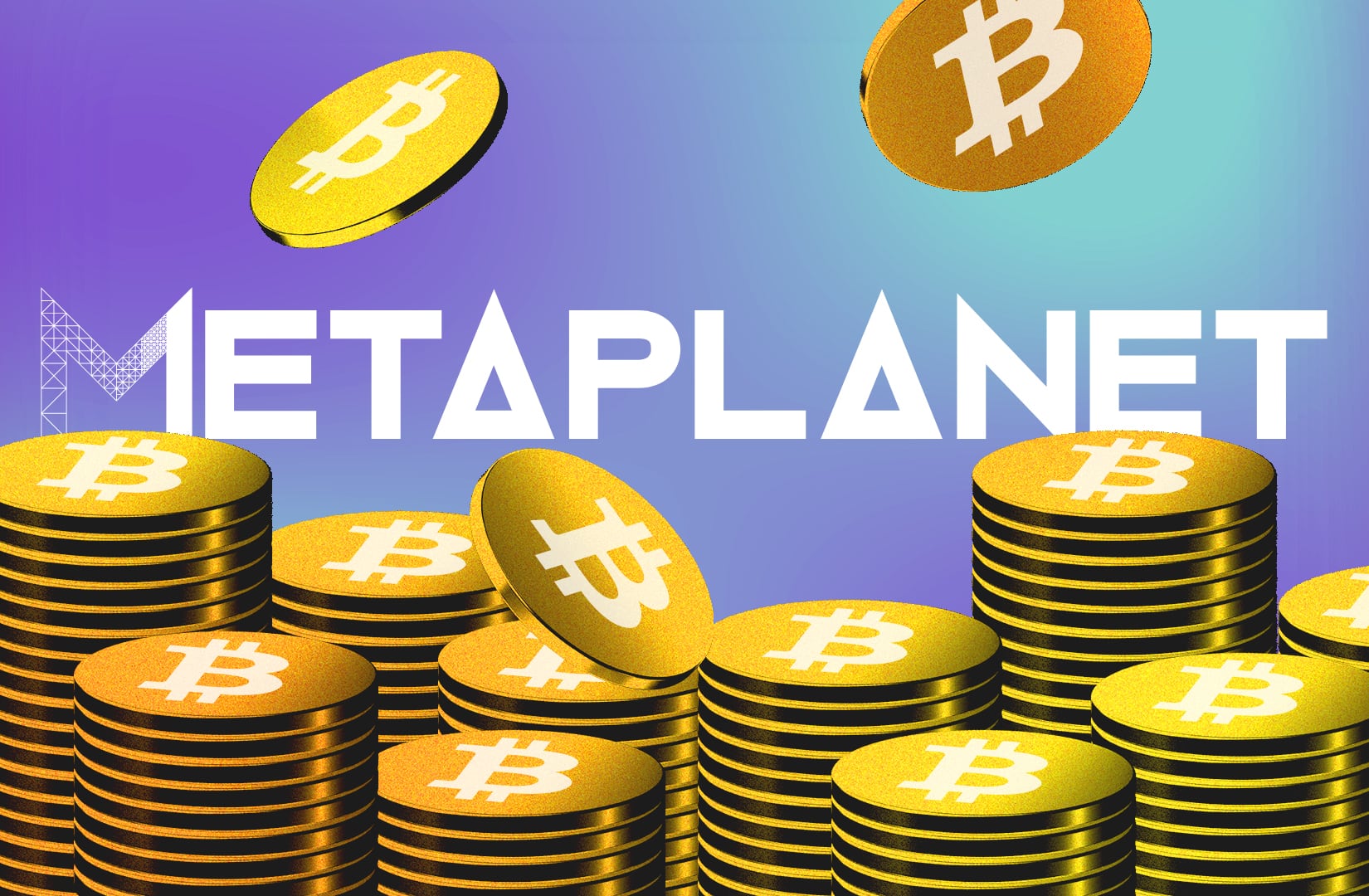Metaplanet hits $1bn Bitcoin treasury mark as VanEck warns of ‘capital erosion’
0
0

Not long ago, holding Bitcoin in corporate treasuries was considered a fringe hedge against currency debasement.
But lately it’s turning into a competitive leaderboard.
On Monday, Tokyo-listed Metaplanet added another 1,112 Bitcoin to its reserves, pushing its total holdings to exactly 10,000, worth just above $1 billion. It’s a major milestone in its bid to become Asia’s answer to Strategy.
The latest purchase bumped Metaplanet up to ninth place among publicly traded Bitcoin holders.
And the market liked what it saw. Metaplanet shares surged more than 25% on the day, extending a rally that has seen the stock gain over 2,000% since this time in 2024.
The purchase comes as the number of Strategy copycats has jumped to over 220. Even the US president-linked Trump Media recently unveiled plans to buy Bitcoin for $2.5 billion.
However, not everyone is convinced this kind of growth is sustainable.
Some, like Coinbase, the crypto exchange, have warned that companies adding Bitcoin to their balance sheets represent a systemic risk to crypto markets.
Others, like VanEck’s head of digital assets, Matthew Sigel, warn that companies’ strategy to aggressively raise capital to buy Bitcoin, risks tipping from accretive to extractive.
“Once you are trading at net asset value, shareholder dilution is no longer strategic,” he wrote on X. “It’s erosion.”
The NAV argument
Net asset value, or NAV, refers to the per-share value of a company’s assets minus its liabilities.
For Bitcoin treasury firms like Metaplanet, their NAV is largely tied to the market value of their Bitcoin holdings.
This means that if its stock price trades significantly above its NAV, companies can sell new shares to raise capital and accumulate more Bitcoin.
That’s the exact model pioneered by Michael Saylor of Strategy, which has repeatedly issued stock at a premium to fund its Bitcoin buys.
But problems can arise if the price falls to match NAV, as continued share issuance risks diluting shareholders without adding meaningful value.
Metaplanet, for instance, is valued by investors as if Bitcoin were trading over $700,000, according to analysts at 10x Research.
If the price of Bitcoin falls or the company’s stock slides, the model could break down fast.
Rooted in reality
The risks aren’t just theoretical.
Five spots below Metaplanet sits Semler Scientific, a medical tech company that fully embraced a ‘Bitcoin-first’ approach in 2024.
Despite Bitcoin trading near its all-time high levels well above $100,000, Semler’s stock is down 46% from the beginning of 2025.
The company now trades at a discount to its Bitcoin holdings, with a market cap around $420 million and nearly 4,500 Bitcoin on its books. That puts its multiple-to-NAV ratio at just 0.84, according to Strategy Tracker.
That drop below NAV has effectively cut off its ability to raise more capital through share sales, which had been the very engine that once powered its Bitcoin accumulation.
Without the premium, issuing equity would dilute existing shareholders without creating proportional value.
KULR, another recent Bitcoin treasury convert, has also seen its multiple-to-NAV slide.
The multiple sat above 10 in early January, not long after KULR began accumulating Bitcoin. Today, it has dropped to just above 3, near its lowest level to date.
Its stock price is down 70% since January.
Crypto market movers
- Bitcoin has gained 1.6% in value over the past 24 hours and is trading at $106,800
- Ethereum is up 3.7% in the same period to $2,615.
What we’re reading
- Ripple-SEC case nears finish line. Crypto attorney sees 70% chance, says judge ‘wants more’ ― DL News
- White House Rejects Ban on Conflicts of Interest in Crypto’s CLARITY Act ― Unchained
- Liverpool is crypto capital of UK, survey finds — The Guardian
- What you missed this week — Milk Road
- Solana ETF filers pass ball to SEC to ‘iron out details’ on staking revisions ― DL News
Kyle Baird is DL News’ Weekend Editor. Got a tip? Email at kbaird@dlnews.com.
0
0
 Manage all your crypto, NFT and DeFi from one place
Manage all your crypto, NFT and DeFi from one placeSecurely connect the portfolio you’re using to start.






